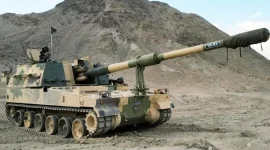- Views: 1K
- Replies: 10
In a significant step towards self-sufficiency in defence, the Indian Army has successfully developed and inducted the ASMI, the nation's first indigenously designed and manufactured 9×19 submachine gun. Led by Colonel Prasad Bansod, this achievement marks a new era of innovation within the Army.
The ASMI project is not just about a single weapon; it signifies a broader shift in the Army's approach to weapons development. Traditionally reliant on external agencies like the DRDO and PSUs, the Army is now demonstrating its in-house design capabilities, potentially reducing dependence on imports and fostering a culture of innovation.
To further this goal, the Indian Army has established the Army Design Bureau (ADB), inspired by its successful Warship Design Bureau. Initially, the ADB will collaborate with academia, private firms, and PSUs to develop weapons and systems tailored to the Army's specific needs.
The ADB's long-term vision is to become the central design and development hub for the Indian Army, responsible for conceptualizing and creating a wide range of advanced military technologies, including next-generation tanks, artillery, communication systems, and UAVs.
This move towards self-reliance offers numerous benefits, including enhanced operational effectiveness, reduced dependence on imports, cost savings, technological advancement, and a boost to the domestic defense industry.
While challenges like building technical expertise, navigating bureaucracy, and ensuring quality remain, the ASMI project and the establishment of the ADB are promising signs that India is on the right track toward becoming a self-reliant defense innovator.
Reports suggest that the ASMI has already been inducted into the Northern Command and is being tested by other security forces. Further analysis will reveal its full impact on the Army's operational capabilities and India's defense industry.





